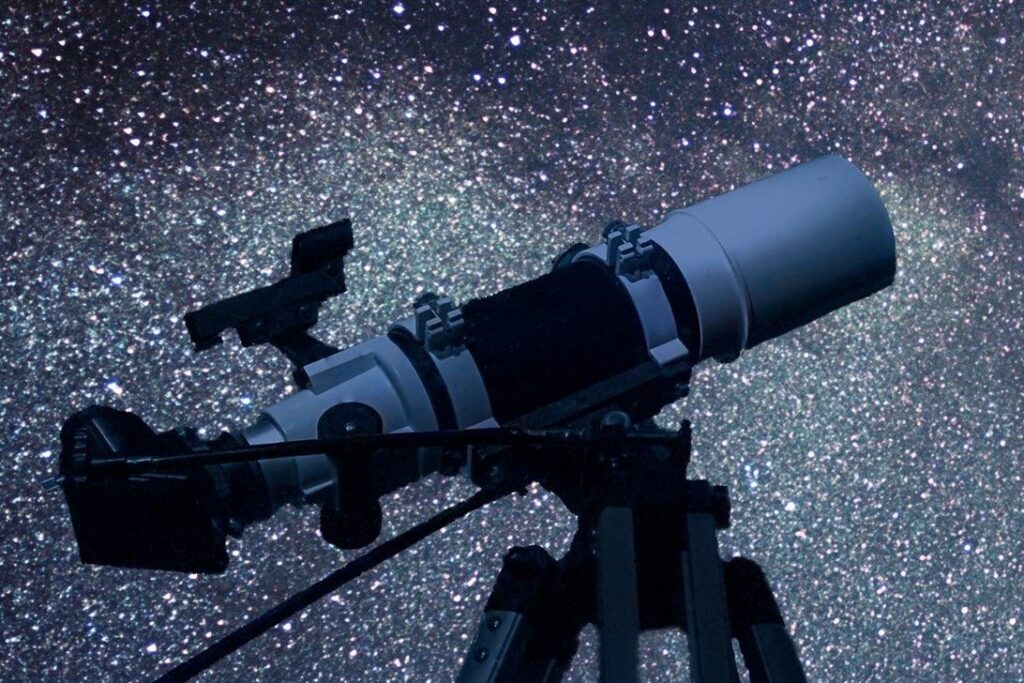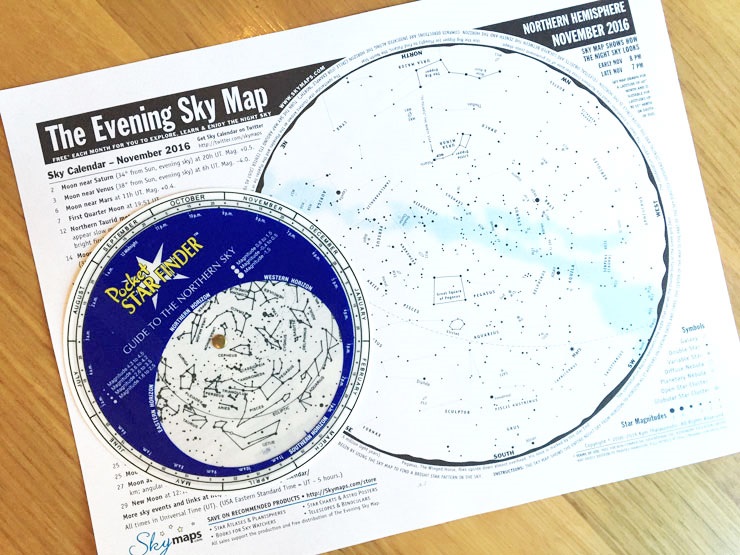A little-known fact among amateur star gazers is that Neptune is the only solar system planet that can’t be seen with the naked eye. The main reason for this is that under the best conditions, it’s never brighter than magnitude 7.6. The best human eyes can’t see objects fainter than magnitude 6.5. This makes it impossible to see Neptune without binoculars or a telescope. Another dilemma in finding the giant cold planet is knowing where to look. If this is your current challenge, then this article is for you. Keep reading as we explain how to find Neptune through a telescope. We’ll also highlight a few additional facts that make Neptune such an interesting planet!

Thankfully, this slow rotation is often what makes it easy to find when you know where to aim your telescope. Generally, you’ll find the cold world between the constellations Aquarius and Pisces. A huge plus point is that the Pisces constellation can be seen from just about all points on earth. Finding Aquarius will also be quite easy to find as it’s among the top 10 largest constellations. Follow these simple steps to make the process quick and simple:

As a beginner, you might wonder how you’ll know you’re looking at Neptune when you actually see it. At its closest earth approach, Neptune’s size is an exceedingly small 2.4 arc seconds Trusted Source Arcsecond | COSMOS For observations from the Earth’s surface, turbulence in the Earth’s atmosphere causes point sources (such as stars) to be smeared out and twinkle. This is known as seeing. Under the best atmospheric conditions, point sources will be smeared out to an angular diameter of about 0.5”. astronomy.swin.edu.au . Generally, you’ll see a telltale disc-shaped object with a bluish hue. This will be different from the pinpricks of light that represent the average star. The best way to see Neptune as clearly as possible is to use a quality telescope. A popular beginner’s choice is the Celestron-PowerSeeker 127EQ Telescope. This Newtonian Reflector telescope is compact and portable and boasts a 127mm aperture. With two eyepieces and a 3x Barlow lens, you can expect clear, crisp images. If you prefer reflector telescopes, then our article, 5 Best Refractor Telescopes For True Space Enthusiasts, is informative and well worth a read.

Scientists estimate that the distance between the sun and Neptune is about 30 times larger than that of the earth and the moon. Whenever Aquarius and Pisces are in the night sky, Neptune won’t be far behind. Since both Aquarius and Pisces are relatively bright, they won’t be too difficult to find. Another telescope to consider opting for when you start star and planet gazing is the Earth Telescope. This refracting telescope is ideal for beginners or kids to start their star-gazing adventure. Interchangeable eyepieces, a 3x Barlow lens, and a 5×24 finder scope makes finding hidden planets like Neptune amazingly easy! With its affordable price tag, it’s easy to see why this impressive telescope is regarded as one of the best telescopes that you can buy for under $200.
Previous studies showed that Neptune had three rings. However, updated research from NASA Trusted Source The ice giant Neptune was the first planet located through mathematical predictions rather than through regular observations of the sky. (Galileo had recorded it as a fixed star during observations with his small telescope in 1612 and 1613.) When Uranus didn’t travel exactly as astronomers expected it to, a French mathematician, Urbain Joseph Le Verrier, proposed the position and mass of another as yet unknown planet that could cause the observed changes to Uranus’ orbit. www.nasa.gov has confirmed that Neptune has six known rings. These rings are not uniform and are made up of hard and solid ice particles. As the particles fuse, they create a solid disk that we identify as rings. The rings are similar to Saturn’s rings and are also not visible without a telescope. Encke, the outermost ring, is situated about 3 billion miles away from the planet.
The innermost ring, Haumea, can be found 7.4 billion miles from the planet’s center. When you’re looking at these rings through a telescope, they’ll appear as bright spots.
Whether you can see Neptune’s rings clearly will depend on the quality of the telescope you’ve opted for. For a list of potential choices, consider reading the best telescopes for astrophotography.
Unlike the earth, Neptune’s atmosphere is made up of nitrogen gas and covers the whole planet. Since the atmosphere is only 0.1% thicker than earth’s air, it’s actually very thin. Additionally, the atmospheric pressure is roughly 100 times more than Earth’s Sea level pressure. With a temperature that ranges from -190 to +90°C, the average temperature is usually -180°C. The planet also features clouds made of water droplets suspended in the atmosphere by the wind.
Another interesting fact about the Neptune atmosphere is its frosty temperature. With a temperature of -218°C/-361°F, it’s one of the coldest temperatures in the solar system. As with the rings, Neptune’s cloud and atmosphere formulation aren’t visible to the naked eye. Fortunately, you can spot both using a telescope.
When you’re looking at Neptune, you might be wondering if you can see its moon as well. Neptune’s moon, Triton, is the only moon in the solar system which orbits against the direction of its planet’s spin. Despite being the seventh-largest in the solar system, amateurs’ telescopes are usually unable to help you see it. The reason for this is that it’s too far from the earth and shines at magnitude 13. That makes it out of reach for most telescopes. Thirteen other moons also orbit Neptune, but they’re even smaller than Triton, making them even less visible.
Neptune started 2022 in the constellation of Aquarius, where it was visible until the beginning of May. Later in the year, it slowly moved to Pisces, where it remained until mid-August. As the year progresses, the cold giant will return to Aquarius. To catch more than a glimpse of the blue planet, the following information will be helpful:
While many regard Neptune as a hidden planet because it’s not easily visible, the good news is that you can see it with your telescope. Knowing how to view Neptune through a telescope is relatively easy once you know what you’re looking for, and more especially, where to look. The cold giant is both interesting to learn about and even more exquisite to see!





